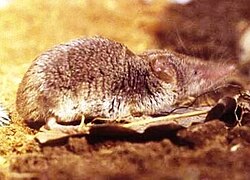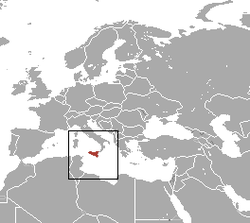Distribution and habitat
It is present in Sicily and Ustica (C. s. sicula), in the Egadi Islands (C. s. aegatensis) and in Gozo (C. s. calypso). It lives in open environments of gariga or Mediterranean scrub but also within lyce, cork and beech forest formations, from 0 to 1,800 m (0 to 5,906 ft) above sea level. Sometimes it is also present within citrus groves and cultivated areas as well as, rarely, in rural dwellings.
Subspecies
Four subspecies of the Sicilian shrew are found:
- Crocidura sicula sicula - on the island of Sicily [3]
- Crocidura sicula aegatensis - on the Aegadian Islands [3]
- Crocidura sicula calypso - on the island of Gozo [3]
- Crocidura sicula esuae - a fossil form from the Middle Pleistocene of Sicily, larger than living individuals, though other authors have suggested that this represents an extinct species that was replaced by C. sicula. [4]
This page is based on this
Wikipedia article Text is available under the
CC BY-SA 4.0 license; additional terms may apply.
Images, videos and audio are available under their respective licenses.


